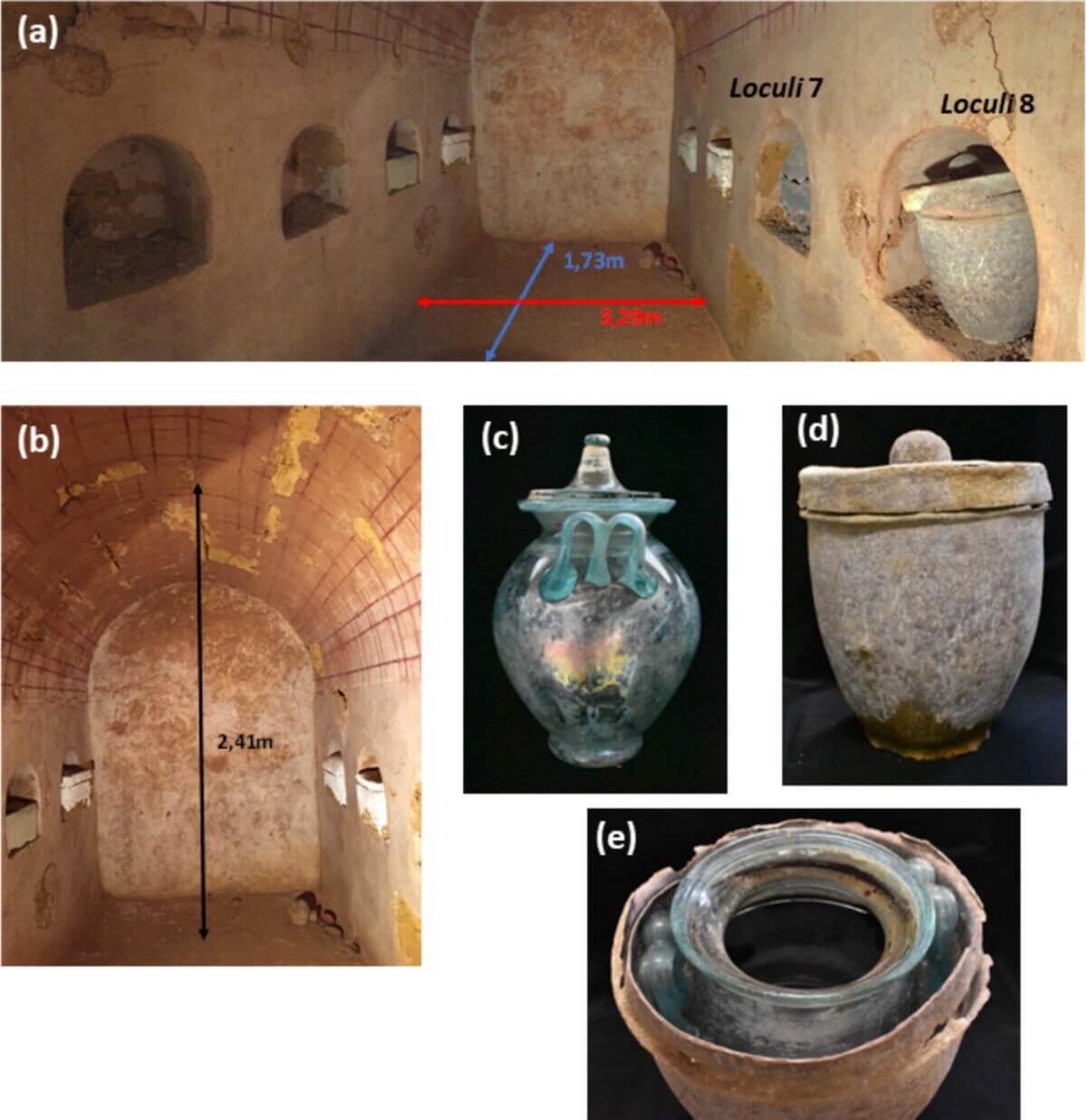
The wine in the glass urn. Image of Juan Manuel Román
CORDOBA, Spain — Have you ever heard the expression “aging like fine wine”? Well, an amazing discovery in Europe may be the “finest” in history. In an extraordinary archaeological find, researchers have uncovered what may be the world's oldest known wine still in liquid form.
The discovery was made in a Roman funeral chamber in Carmona, Spain, where a glass urn containing about five liters of a reddish liquid was unearthed alongside cremated human remains. Chemical analysis suggests this liquid is highly decayed white wine dating back approximately 2,000 years to the early 1st century CE.
This remarkable find, published in the Journal of Archaeological Science: Reports is giving scientists a unique glimpse into ancient Roman burial practices and winemaking techniques. The presence of wine in the burial chamber also aligns with what we know of ancient Roman funerary rituals, where wine was often used in libations or as an offering to aid the deceased in their journey to the afterlife.
“At first we were very surprised that liquid was preserved in one of the funerary urns,” explains the City of Carmona's municipal archaeologist Juan Manuel Román in a media release.
Unearthing History
The discovery was made during rehabilitation work on a house in Carmona in 2019. Workers uncovered a previously unknown Roman mausoleum containing eight alcoves, six of which held ash urns with cremated remains and various burial objects. The glass urn containing the liquid was found in one of these spaces, sealed inside a lead case.
The funeral chamber itself was in remarkably good condition, with painted geometric designs still visible on the walls and ceiling. Based on the artifacts found and structural similarities to other known sites, archaeologists date the tomb to the first half of the 1st century CE.
The team was also able to decipher the names of two of the people in this chamber: Hispanae and Senicio. The other remains are still unidentified but include two men and two women.

Examining the Ancient Liquid
To determine if the mysterious liquid was indeed wine, researchers used a battery of sophisticated analytical techniques:
- Elemental Analysis: Using inductively coupled plasma mass spectrometry (ICP-MS), the team examined the liquid's mineral content. They found high levels of potassium, calcium, magnesium, and sodium — a profile similar to modern wines produced in the same region.
- Organic Compound Detection: High-performance liquid chromatography-mass spectrometry (HPLC-MS) was used to search for specific organic molecules called polyphenols, which are known wine biomarkers. The researchers identified seven different polyphenols typically found in wine, including quercetin and apigenin.
- Color Determination: The absence of a compound called syringic acid, which forms from the breakdown of red wine pigments, suggested the original wine was white rather than red.
- Ethanol Testing: Gas chromatography detected trace amounts of ethanol, providing further evidence that the liquid was once wine.
A Glimpse into Ancient Winemaking
The analysis revealed several interesting findings about Roman wine production:
- The wine's mineral profile was similar to modern fino wines from the same region, suggesting that the local winemaking practices haven't changed in over two millennia.
- The high pH (7.5) and low organic content reveal that this wine suffered from significant decomposition over time, as expected for such an ancient sample.
- The polyphenol profile matches descriptions of white wine production in the region by ancient Roman writers like Columella.
- The reddish color of the liquid, despite evidence it was originally white wine, is likely due to chemical changes over time and possible interactions with the cremated remains.
This discovery provides unprecedented insight into Roman burial practices, winemaking techniques, and the remarkable preservation of organic materials under the right conditions. The find is particularly significant as it represents the first known instance of ancient wine preserved in liquid form for chemical analysis.
“The results obtained in this work strongly suggest that the reddish liquid in the ash urn was originally wine that decayed with time, and that it was about 2000 years old, and hence the oldest wine found to date,” the team concludes in the report.
As excavations continue in the rich archaeological landscape of southern Spain, who knows what other ancient secrets might be uncovered, waiting to tell their stories after millennia of silence.










